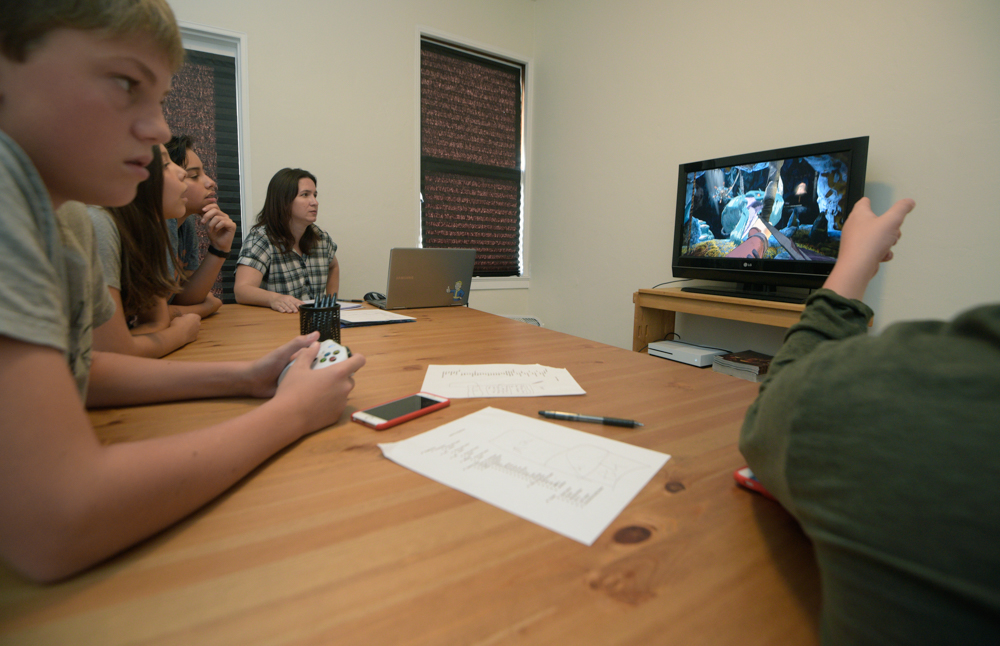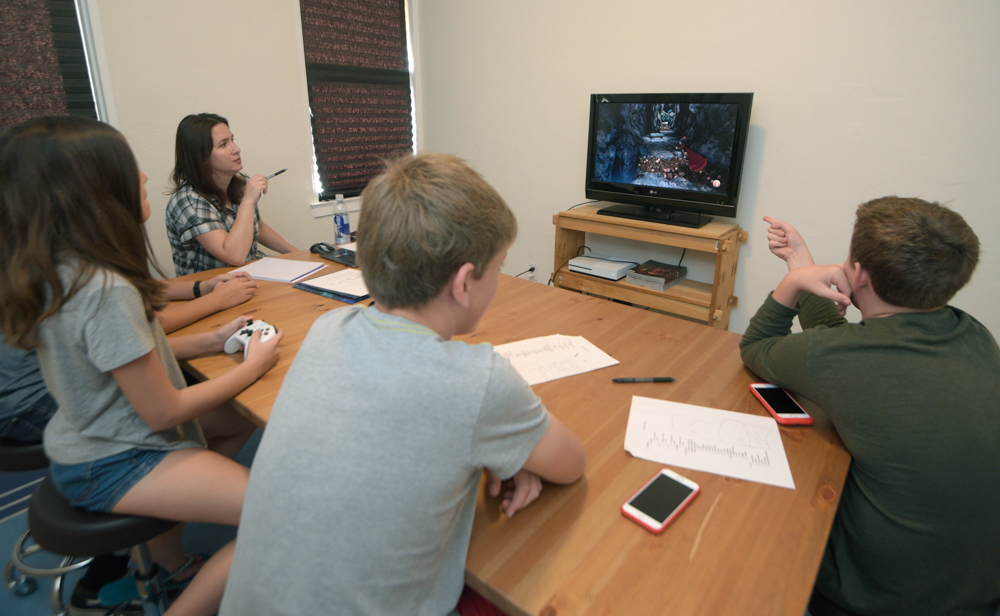Games Are Good for Learning
Progressive Learning Academy’s Gamification and Game-Based Learning Techniques

A newly launched private school in Santa Barbara, the Progressive Learning Academy, is built on the concept that students can learn what they need to know about a topic or an idea through participating in a well-designed game. According to Carrie Linden, director of the academy’s Gaming for Education program, the approach is gaining traction throughout educational circles as teachers attempt to motivate students by capitalizing on their love for games — old and new, board and online.
The academy hopes to open as a full-time, private middle school in the fall, she said, but in the meantime, it offers math tutoring, homeschool support, and the Gaming for Education program, which costs $25 per hour. According to Linden, the program allows students the opportunity to explore the many avenues of the gaming industry. From game analysis, content creation, branding, and marketing to game-based learning and e-sports, students gain hands-on experience exploring the ins and outs of modern gaming. They also serve as content creators and ambassadors for gamified education and game-based learning.
Linden helps us understand the nuances.
Describe gamification and game-based learning, and how did they evolve? Gamification is when you take game principles, theory, and elements and use them for the delivery of class content or behavior management. Often little changes in the curriculum or its delivery, but the gamelike add-ons work to help build up student engagement and buy in. An example would be students earning game points for assignments and behavior that they can then use to level up their character or use to earn “perks.”
Game-based learning (GBL), on the flip side, is different, as it dramatically changes content delivery. In GBL, students access the majority of the content directly through game play and not teacher instruction.

What does evidence-based research say about gamification and how effective it is in achieving its goal of teaching through gaming? Gamification is still relatively new to the research scene, and many are still trying to establish studies that address the great variance that is found in gamification to see what components are beneficial and which are potentially problematic. What most agree on is that implementing gamification in the class often leads to an increase in student participation, motivation, and attendance, and possibly that it helps narrow the grade gap in a classroom.
How do these techniques promote student learning at the academy? I use game-based learning with my science and social studies units. For these units, students create a role-playing character whom they then role play through their standards — exploring different countries, events, and time periods. Assessments can be built in by adding “boss” quests that require the players use the knowledge they should have picked up along the way to beat the “boss.”
If they do not have the content knowledge needed, they will fail the “boss” encounter, and then I can send them back to areas where they need to experience more of their curriculum. When I use gamification, it is in the less-immersive game-play opportunities. For example, a student may not be in an active role-play quest, but they can go to the character’s job board and select a job offer to do. These may be essays, lectures, or slideshows. They gain experience and income for their character by completing and presenting these.
Are there critics of this approach? Yes! Gamification and game-based learning can be powerful tools in learning, but they can also be very problematic. While game-based learning is very intrinsically motivated, gamification is not. And gamification is the one that is most frequently used by educators. The addition of badges, in-class currency, and leaderboards often function as an extrinsic motivator. This means that kids are more likely to perform only as long as they are getting some form of reward for their participation. When that reward is removed, many will disengage and be less likely to perform than they were before the implementation of the gamified unit.
With game-based learning, teachers must put together a very well thought-out and planned unit or else the game may not, in fact, teach the academic standards it was intended to and may end up simply being a game, leaving kids with a gap in content knowledge. Both are still being researched, so many are also hesitant [to integrate the approach] due to the lack of strong empirical data supporting it.



